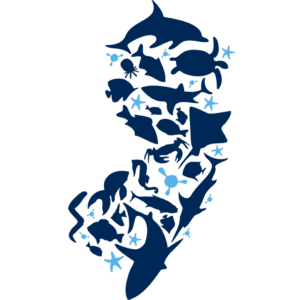 Thanks to New Jersey Digest for highlighting the UCI Blog in its list of “4 New Jersey Colleges Doing Blogs the Right Way.” The Jan. 28 article notes that our blog stands out for its focus on environmental issues and marine research work done by students and faculty. Check it out here!
Thanks to New Jersey Digest for highlighting the UCI Blog in its list of “4 New Jersey Colleges Doing Blogs the Right Way.” The Jan. 28 article notes that our blog stands out for its focus on environmental issues and marine research work done by students and faculty. Check it out here!
-
UCI Makes New Jersey Digest List of ‘Colleges Doing Blogs the Right Way’
-
Haak Joins UCI as Postdoctoral Researcher
The UCI welcomes Christopher Haak as a postdoctoral researcher focused on fisheries science. In this role, Haak will split time working at the National Oceanic and Atmospheric Administration’s (NOAA) James J. Howard Laboratory in Sandy Hook and the Monmouth University campus.
Working with a team of NOAA National Marine Fisheries Service researchers, Haak will develop habitat use models for a diverse group of commercially and ecologically important fish species across the Northeast and Mid-Atlantic continental shelf. The goal of the team’s work is to predict future shifts in species distributions due to environmental change.
After an Emmy-winning career in film and television, Haak shifted gears to follow his lifelong passion for the oceans, pursuing his Ph.D. in marine science at UMass Amherst. There, his research focused on bonefish and other species occupying shallow nearshore habitats in the Bahamas and Puerto Rico, which he used as a model for examining a diverse range of ecological questions.
Among these, Haak’s principal research interests comprise two areas of study: the often-overlooked effects of hydrodynamic factors, such as wave and tide-driven water movement, on the habitat use patterns and distributions of fishes; and the similarly under-appreciated role of species interactions, in particular sociality and interspecific information use, in structuring fish communities. In studying these phenomena, Haak hopes to better understand and/or predict the ways that different species and assemblages thereof will respond to a changing world.
-
The Results Are In: Season 1 of Coastal Lakes Water Quality Sampling
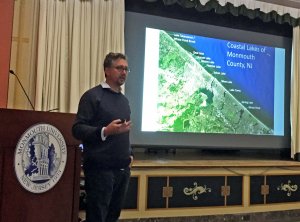 Citizen scientists, New Jersey Department of Environmental Protection (NJDEP) representatives, and Monmouth University researchers who’ve been participating in the Coastal Lakes Observing Network (CLONet) gathered at a UCI-hosted workshop Nov. 1 to discuss their initial findings and experiences. From June through September, the community volunteers collected more than 150 water samples from Deal Lake, Lake Como, Lake Takanassee, Spring Lake, Sunset Lake, Sylvan Lake and Wesley Lake, recording information such as water temperatures, dissolved oxygen levels, pH and weather conditions at the time of their sampling.
Citizen scientists, New Jersey Department of Environmental Protection (NJDEP) representatives, and Monmouth University researchers who’ve been participating in the Coastal Lakes Observing Network (CLONet) gathered at a UCI-hosted workshop Nov. 1 to discuss their initial findings and experiences. From June through September, the community volunteers collected more than 150 water samples from Deal Lake, Lake Como, Lake Takanassee, Spring Lake, Sunset Lake, Sylvan Lake and Wesley Lake, recording information such as water temperatures, dissolved oxygen levels, pH and weather conditions at the time of their sampling.The goal of CLONet is to help solve environmental problems facing these lakes, such as harmful algal blooms (HABs), by building a better understanding of their root causes. Monmouth University staff and students trained the community members to use sampling kits and file their results through an online database, where each lake’s data could be analyzed and compared.
If four months of placing the lakes under a microscope has taught Endowed Associate Professor of Marine Science Jason Adolf one thing, it’s this: “A coastal lake is not a coastal lake is not a coastal lake.” Although they’re all small water bodies next to Monmouth County beaches, Adolf found their physical makeups and dynamics to be surprisingly different.
The following are a handful of results from the first season of sampling that were revealed at the workshop.
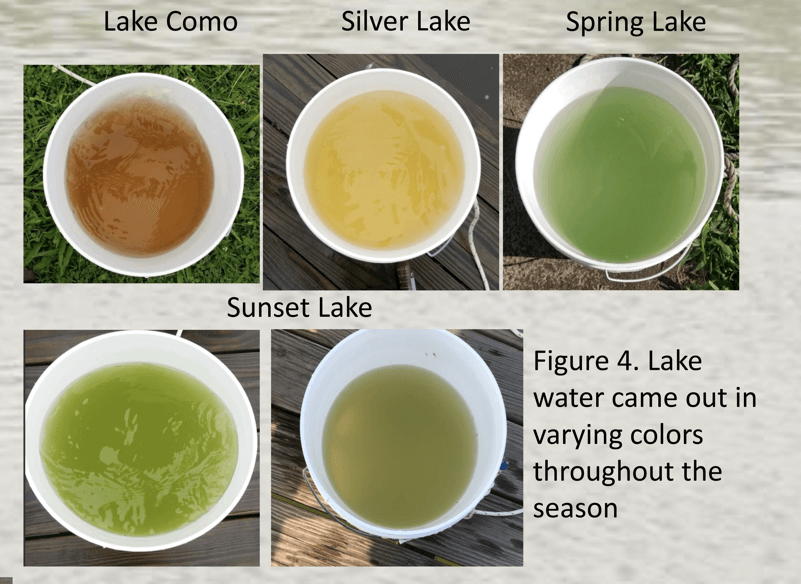
Water colors varied widely from lake to lake. Colors can be influenced by a wide range of factors, including plankton living in the waters and the sediments found on the bottom. Adolf said they can also be indicators of HAB presence.
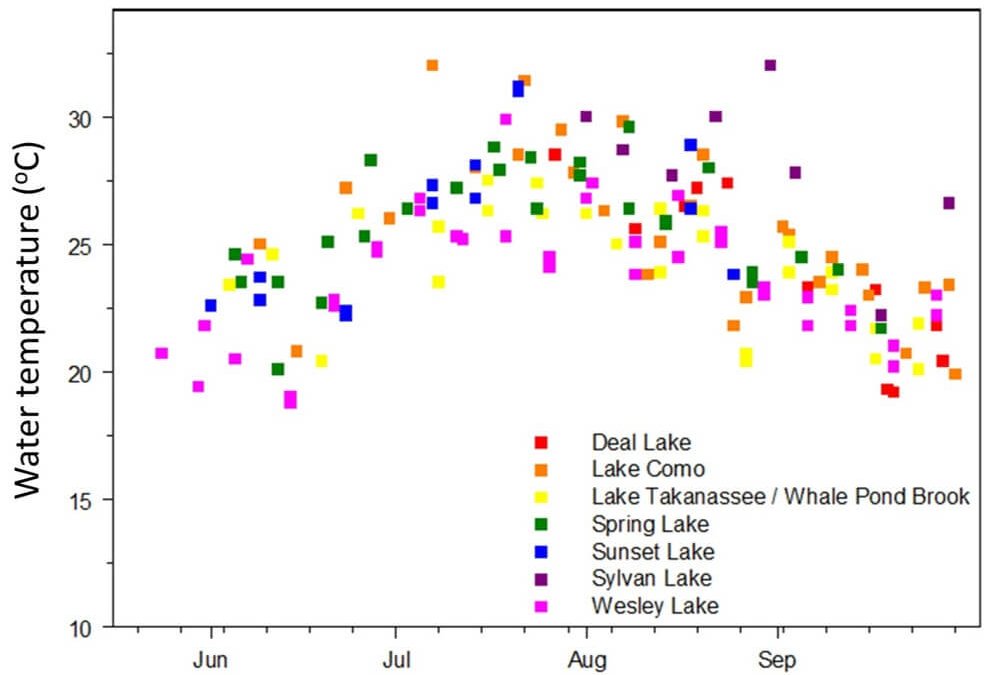
There were significant differences in lake temperatures, too. Overall, the waters were found to be warm, a favorable condition for HABs. Adolf found Deal Lake’s temperatures were 5-10 degrees Celsius higher than data recorded in the summer of 1978. He said climate change could not account for a gulf that wide, and speculated that a change in depth over the decades could be responsible.
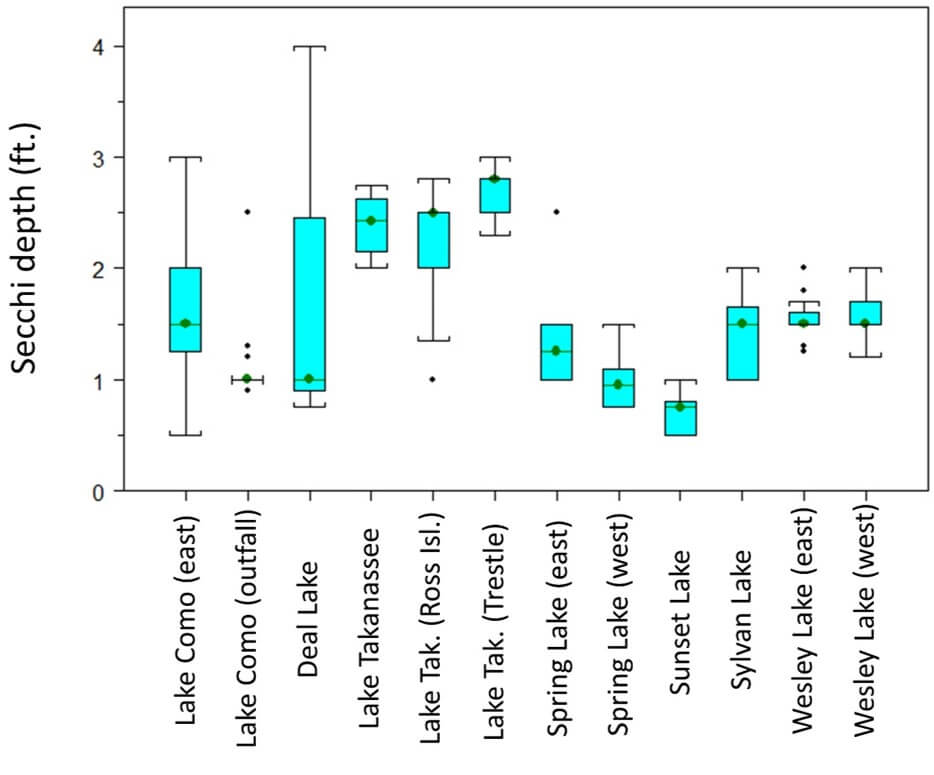
The waters were murky. A lake’s clarity (turbidity) can be measured using a piece of equipment called a Secchi disk. The black and white disc is slowly lowered into the water, and when it is no longer visible, the CLONet participants recorded the depth. Sunset Lake, Deal Lake and portions of Lake Como and Spring Lake were among those found to have mean Secchi depths in the range of 1 foot or lower. Low Secchi depth during sampling was found to be a strong indicator of HAB abundance.
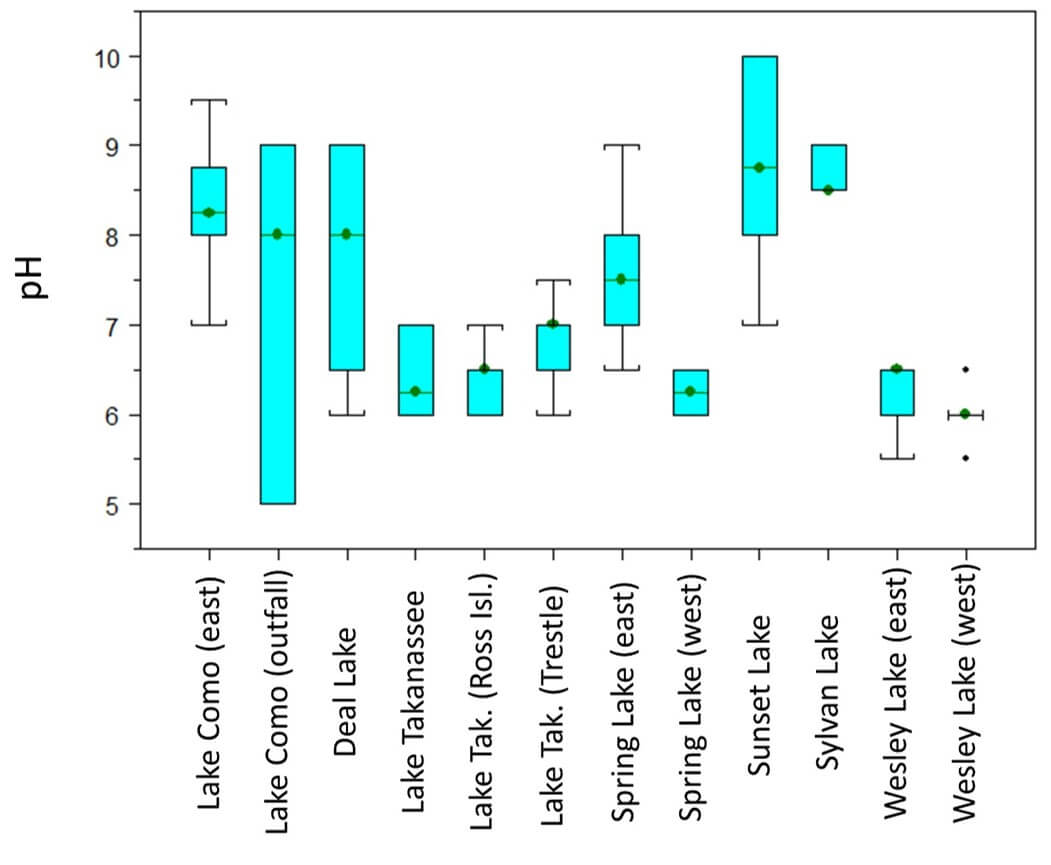
pH levels varied widely among lakes. A lake’s pH range can determine its suitability as a habitat for wildlife species. For example, those with low pH (high acidity) are not favorable for animals such as turtles, which can struggle to grow and maintain healthy shells, while frogs and fish such as trout and pike prefer such environments. The testing indicated Spring Lake, Wesley Lake and Lake Takanassee had low pH while Sunset Lake and Sylvan Lake were on the higher end of the spectrum.
To view additional results, download the presentation slides from Adolf and UCI Associate Director Thomas Herrington.
Sampling will continue in the fall and winter months and through next year. Adolf said the data gathered over the last few months can serve as a baseline that the impacts of specific management and restoration projects can be measured against – for example, lake dredging, the installation of green infrastructure, or housing developments under construction along a lake’s tributaries.
The work is being conducted with grant funding provided by the Jules L. Plangere, Jr. Family Foundation and through a collaboration between Monmouth University and the NJDEP Marine Monitoring Lab at Leeds Point. For more information on CLONet, visit monmouth.edu/clonet.
-
Monmouth, Rutgers Deploy Autonomous Gliders for Hurricane Research
Step aboard the R/V Heidi Lynn Sculthorpe as Urban Coast Institute Marine Scientist Jim Nickels, Monmouth University student Bryce McCall, and Rutgers University scientists Scott Glenn and Travis Miles deploy a pair of U.S Navy gliders off the New Jersey coast. The gliders’ mission was to cruise the New York Bight during the hurricane season, gathering data on the interactions between water conditions and storms, with the ultimate goal of improving storm modeling.
Additional project partners include the Mid-Atlantic Regional Association Coastal Ocean Observing System (MARACOOS), the Integrated Ocean Observing System (IOOS) and the National Oceanic and Atmospheric Administration (NOAA).
